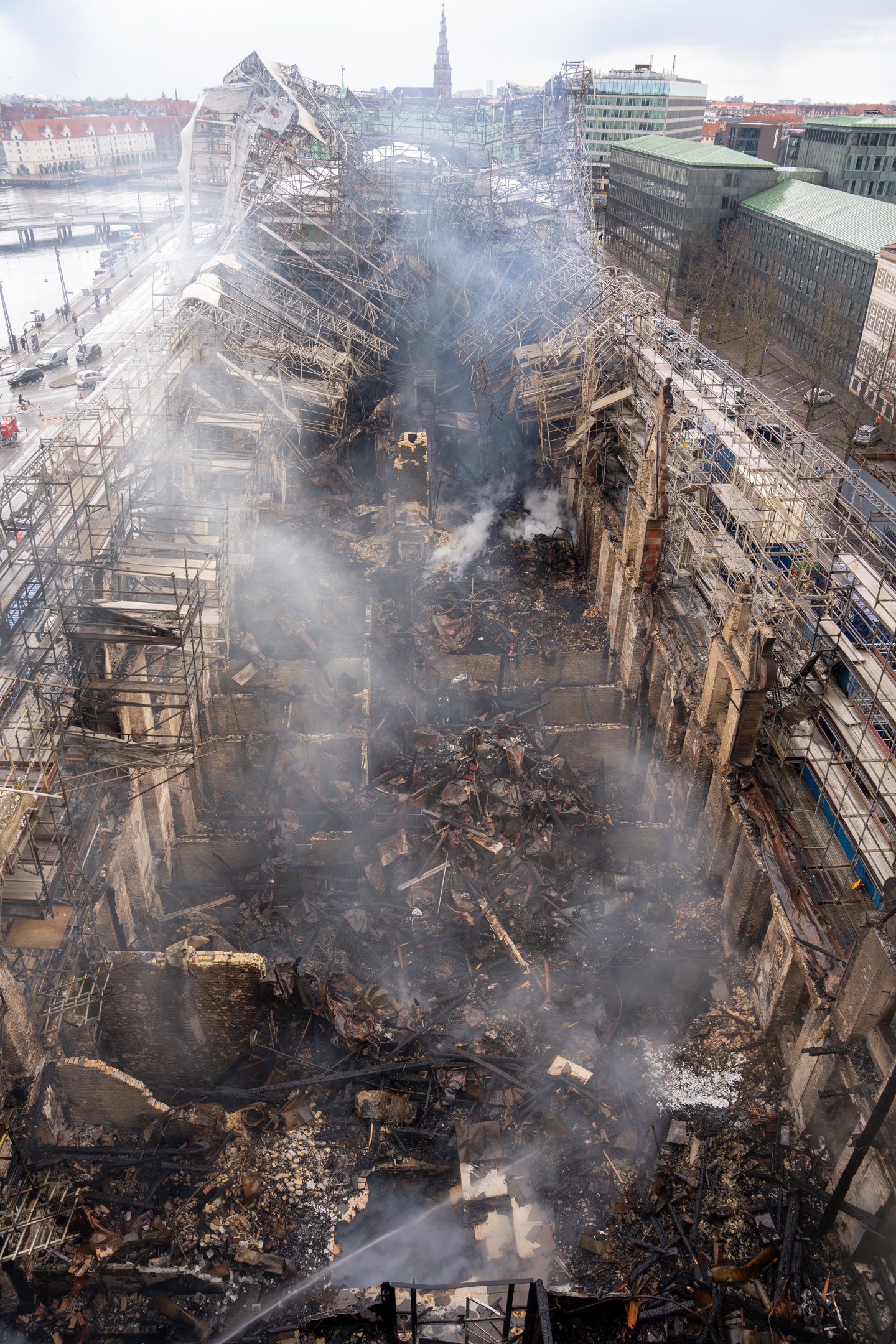An article recently appeared in the British newspaper The Guardian talking about the problems Copenhagen was facing with bicycle congestion. Copenhagen was so good at convincing its residents to get on their bikes that the cycle paths had become overcrowded during rush hour with cyclists jostling with each other for space.
If one solution could be to do away with the cars and let bicycles roam the streets – what freedom that might be – and it’s taken one of the world’s most esteemed bicycle races to do just that.
For one week from September 19-25, the city centre will be closing 70 streets to host the International Cycling Union (UCI) Road World Championships. If the Tour de France is the Champions League of cycling, this is the World Cup, drawing cyclists representing nations from Eritrea to Belize to do battle on the empty streets of Copenhagen for the title of World Champion in Road Racing.
Lycra-clad men and women zipping around on ridiculously expensive carbon-fibre bicycles, it turns out, are a massive draw. The competition will be CopenhagenÂ’s biggest ever international event, with 400,000 spectators expected to watch the worldÂ’s fastest road cyclists power in and out of the city.
“It is the biggest event ever held in Denmark in terms of media interest,” Jesper Worre, the head of the Danish Bicycling Association, told The Copenhagen Post. “It’s even bigger in terms of media interest than the [2009 UN Climate Conference] COP15. We’re expecting at least 30,000 foreign guests.”
The championship has taken five years to plan, though it took some convincing to persuade city officials to close down the city centre to traffic for a week.
“We’ve been planning the course and getting the acceptance of the politicians,” Worre said. “But we needed to convince city officials that we could close the city for seven days. They were asking why we needed to shut down the major roads and they forced us to seek alternatives.
“But in the end they wanted it to be in Copenhagen.”
This yearÂ’s World Championships are special because it will be the first time the races will be held in a city centre, which is something Worre fought for. Having the race set in the middle of a city that serves as a model for bicycling culture worldwide makes sense, and it was this that attracted the organisers to the city in the first place.
“The UCI is incredibly impressed with bicycle culture in Copenhagen. When they looked out of their hotel windows in the morning, they noticed how many people biked to and from work everyday, even in the winter.”
Lars Bernhard Jørgensen, the managing director of Wonderful Copenhagen – the city’s tourism agency – agreed with Worre.
“I think the UCI chose Copenhagen for this event because we already hold a strong position in biking, both in terms of elite cycling, in which have several top riders, and also Copenhagen’s broader brand as a bike city,” Jørgensen said.
“When you are deciding where to locate a large event – and this is a big event globally – then one of the first things you look for is how it will be perceived by the public and also whether the media and spectators see it as a natural and obvious choice.”
And an obvious choice it is. Copenhagen’s commitment to cycling is known the world over, especially after CNN’s Richard Quest covered the city earlier this summer in their ‘Future Cities’ series. But the city’s bicycle friendliness had already attracted the attention of the UCI in 2007, when it named Copenhagen the organisation’s first Bike City. In attaining the label, Copenhagen was then named host of several other UCI cycling events, such as the BMX Supercross World Cup (2008 and 2009), track cycling’s World Cup Classics (2007-2009) as well as track cycling’s World Championships (2010).
But while the other cycling events were held at venues outside the city centre, the urban setting of the Road World Championship presents a special opportunity for the city to sell itself to a massive global audience.
“We expect 400 million people to watch it world-wide and 800 journalists to cover the event. We’re sure some will take the opportunity to write about Copenhagen, but most will probably just cover the event, which is where the route itinerary comes in,” Jørgensen said.
“Racing through the streets of Copenhagen gives the pundits the opportunity to tell stories about the city, just like they do in the Tour de France.”
Jørgensen is grateful to Copenhagen’s residents for putting up with traffic restrictions during the competition week, but argues that the city stands to profit from events like these.
“It’s an event that goes well with our image of Copenhagen – that it’s a liveable city, a metropolis in a nutshell where there’s room for cyclists and green solutions. All these things go well together especially when trying to attract large green technology conventions to the city for instance.”
But the pay-off is not only in terms of attracting tourism and business to the city, itÂ’s also important for the self-esteem of its residents.
“Big events like this play a role in making us feel proud about ourselves. We need things to look forward to that also create an investment in our city.”
The Road World Championship is a big deal then, not only for the city, its residents and bicycle fans across the world, but also for the cyclists themselves. It’s the second most prestigious race after the Tour de France in July, with many riders skipping the Spanish race, Vuelta e España, in August and early September to prepare.
The races are divided into five classifications – elite men, elite women, under-23 men, junior men and junior women – competing in two races, the time trials and road race.
The time trials start in central Copenhagen on Hans Christian Andersen Boulevard and head to the north of the city and back, while the road race is being held north of Copenhagen in Rudersdal on a 14 kilometre circuit. The main event – Sunday’s elite road race – will also start in central Copenhagen before finishing with 17 laps of the circuit, covering over 260 kilometres.
Standing about watching athletes zoom by on bicycles isn’t all that’s on offer during the week, however. The World Championship happens to also coincide with the Copenhagen Bicycle Festival that is taking full advantage of the competition to put on an array of bicycle-themed events. The activities will focus on Jarmers Plads beside Hans Christian Andersen Boulevard where you can ‘pimp’ your bike, ride bicycle simulators and listen to live music.
But the highlight is the bicycle parade on Tuesday evening. The event will follow the time trial course around the city and is a unique opportunity to experience the freedom of riding through a city with not a car in sight – a scenario many cyclists in Copenhagen, after next week, might long to be enforced on a more permanent basis.
Factfile | The Riders
Unlike the Tour de France, where riders race for a team (such as the Danish-based Team Saxo Bank-Sungard), in the World Championships riders compete for their country. For Denmark, 27-year-old Matti Breschel was favourite to win a medal for the host nation, though he has had to withdraw after crashing in the Vuelta a España. Breschel is one of Denmark’s most promising young riders, winning silver in last year’s World Championship in Australia and bronze in Italy in 2008.
But Denmark still has a chance of making the podium. Jakob Fuglsang could threaten for a medal in the time trial after winning the team time trial in the first stage of La Vuelta. Fuglsang finished four minutes and a place behind Chris Anker Sørensen on the three-week Spanish stage tournament (they finished 11th and 12th) so are both in good form. However, it will take a strong competitor to beat Switzerland’s Fabian Cancellara, who has won the World Championship Time Trial four out of the last five years.
Foreign favourites for the road race include BritainÂ’s Mark Cavendish who excels on flat courses like the one in Copenhagen. He has some serious competition, however, including Norwegian rival and defending champion Thor Hushovd. A world-class sprinter, he clinched two stage victories in this yearÂ’s Tour de France and finished fifth in the points classification, which Cavendish won. Both are currently warming up at the Tour of Britain, an easier competition than Vuelta, which many top riders have avoided before the World Championships. This yearÂ’s Tour de France winner, AustraliaÂ’s Cadel Evans, who won the road race in 2009, has announced he will not participate.
Factfile | The routes
Road races | The elite road race starts at Copenhagen City Hall Square, where the riders head 28 kilometres north before starting the first of 17 laps of a 14 kilometre circuit in Rudersdal.
All other Road Races start and finish on Geels Hill on Kongevejen road. Slotsbakken, at 59 metres above sea level, is the highest point on the route, while the lowest point is 17 metres.
“We have designed an interesting and demanding route for the road race going up Geels Hill. We are convinced that it will be a very tough and varied World Championship,” said Danish Cycling Federation director Jesper Worre.
Time trials | All time trials start and finish at City Hall Square (Rådhuspladsen). The elite men will complete two laps of the 23.2 km circuit that takes riders north to the Østerbro district and Hellerup before reaching Charlottenlund Slotspark. The riders then make their way back towards the city, passing by Kastellet and Amalienborg Castle, before arriving back at City Hall Square.
The under-23 riders will complete two 17.6 km laps, returning back to the city centre when they reach Hellerup. The junior riders turn around in Østerbro.
Factfile | The detours
With 70 roads totally or partially closed during the World Championships, a number of bus routes as well as parking along the route be affected. Check trafikken.dk/vm for information, updates and maps of the affected areas.













